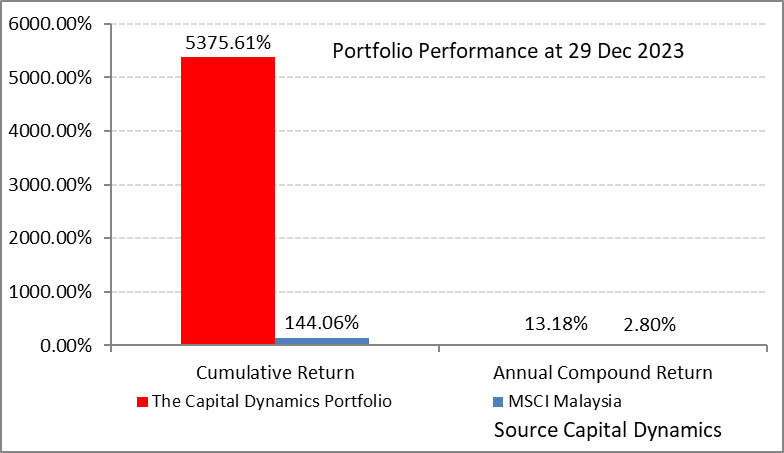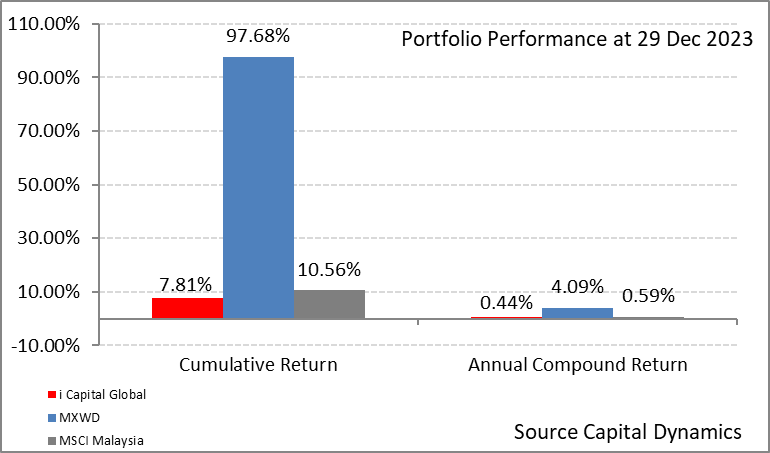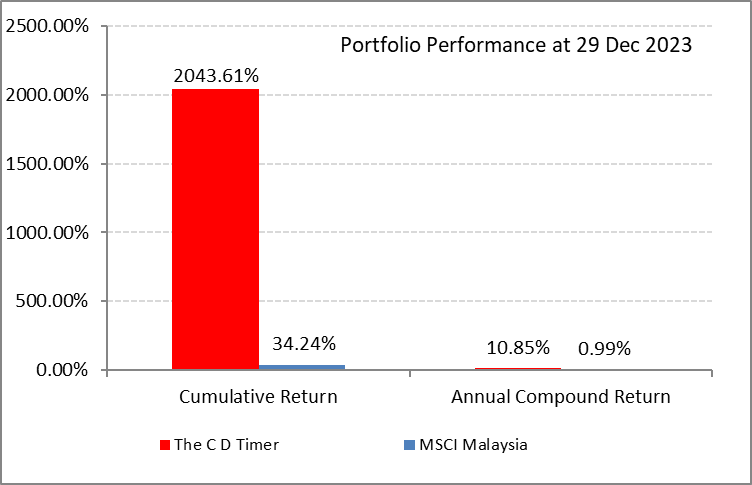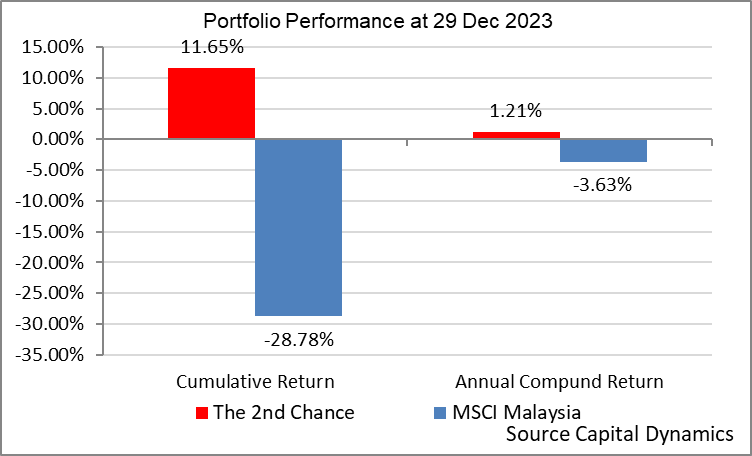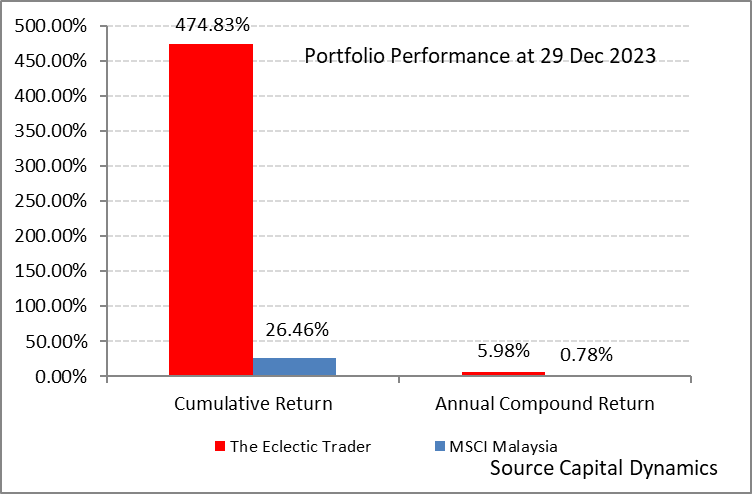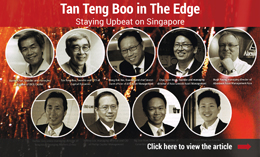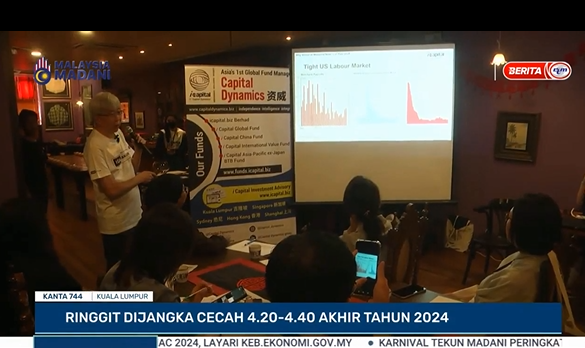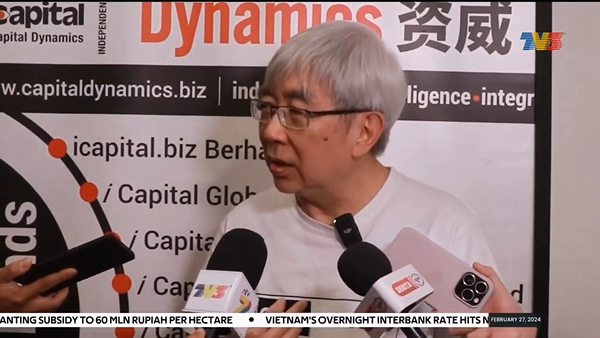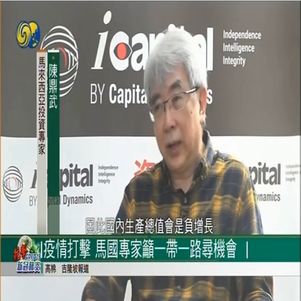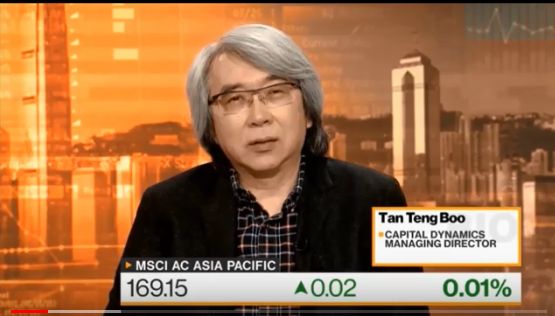Nevertheless, it is heartening to see that the Malaysian media and civil society organisations have collectively launched a campaign called “Maaf Zahir Batin Hari Hari” or known as #MZB365 to help heal a dividing Malaysia. Carrying the meaning of “please forgive my wrongs, both thoughts and deeds”, the campaign will run for one whole year. This initiative could not have come at a better time. We believe the majority of Malaysians still treasure the country’s unique social fabric. With #MZB365, hopefully the silent majority can have a bigger voice to counter the destructive noises of the divisive minority.
"Essentially, there are enough similarities and differences between these 3 countries to make a closer integration amongst the Chinese, South Korean and Japanese economies a logical and natural outcome. What, or who, has been holding up this long overdue move? The United States."
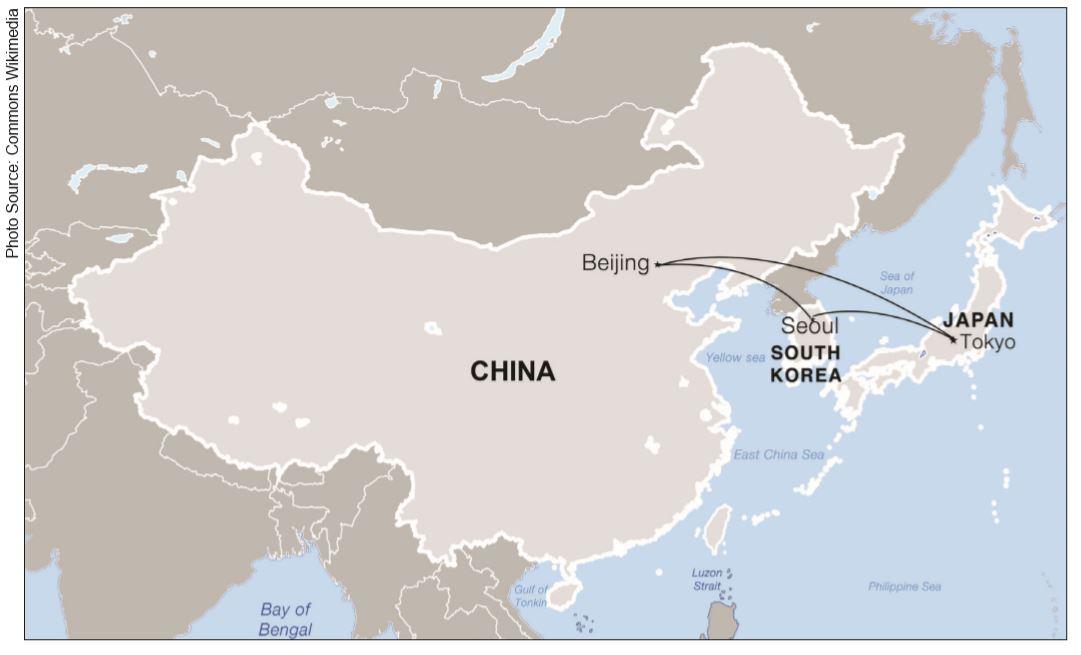
The above map of the Far East gives one the impression that the region is vast. To answer this question, let us get some perspectives. The fastest direct flight from Beijing to Tokyo is 3 hours 10 minutes with a distance of 2,093 km. The fastest direct flight from Beijing to Seoul is only 2 hours with a distance of 953 km. The fastest direct flight from Seoul to Tokyo over a distance of 1,153 km takes slightly over 2 hours. How near or far are these 3 cities from one another?
For comparison, a direct flight from Kuala Lumpur to Kota Kinabalu takes 2 hours 31 minutes with a distance of 1,623 km, or further than from Beijing to Seoul. A direct flight from Madrid to Frankfurt has a duration of 2 hours 18 minutes with a distance of 1,446 km. A direct flight from Rome to Amsterdam takes 2 hours 4 minutes over a distance of 1,297 km, or further than from Seoul to Tokyo.
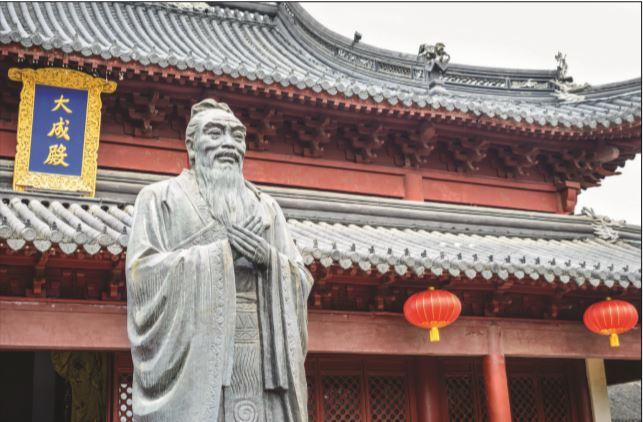
Beijing, Seoul and Tokyo have very long established and strong traditions of Confucianism and Buddhism, and they share many other similar cultural values. The family names are written in front. Even the physical appearances of the Japanese, Koreans and Chinese are similar. (Source: Shutterstock)
Kuala Lumpur and Kota Kinabalu are two cities within the same country. Madrid, Frankfurt, Rome and Amsterdam are all part of the European Union. In comparison, Beijing, Seoul and Tokyo are physically very near to each other. Moreover, these three countries have very long established and strong traditions of Confucianism and Buddhism, and share many other similar cultural values. The family names are written in front. Even the physical appearances of the Japanese, Koreans and Chinese are similar. It is not just the Westerner who cannot distinguish between physical appearances of the 3 nationalities; very often, the Japanese, Koreans and Chinese themselves cannot either. If there are countries that should easily and naturally think and act like one, China, South Korea and Japan would fit the bill. Should they?
Among the 3 Asian powerhouses, China is the biggest in terms of area and population. For one, there are 1,433,783,686 Chinese versus 126,860,301 Japanese and 51,225,308 South Koreans. With a land size of 9,388,211 sq km (excluding Macau, Hong Kong and Taiwan), mainland China is 25.75 times bigger than Japan and 96.56 times larger than South Korea. Japan is the most affluent with a GDP per capita of US$39,185 in Dec 2018. South Korea, with a GDP per capita of US$33,346 is next, followed by China, with a GDP per capita of US$9,776 in Dec 2018. However, in terms of absolute nominal size, China has an economy of US$14.140 trillion, US$5.154 trillion for Japan and US$1.629 trillion for South Korea. The 3 Asian economic giants are also major exporters. In 2018, China exported goods and services worth US$2.651 trillion, with US$929 bln and US$724 bln from Japan and South Korea respectively. However, as a percentage of GDP, exports of goods and services make up 44% of South Korea’s GDP versus around 19% for China and Japan. The three countries account for about 24% of world trade, and have tightly-bound supply chains, with more than US$720 bln in trade moving between them last year. Essentially, there are enough similarities and differences between these 3 countries to make a closer integration amongst the Chinese, South Korean and Japanese economies a logical and natural outcome. What, or who, has been holding up this long overdue move? The United States.
Take away the United States, China, South Korea and Japan would have formed some form of free trade area or economic association a long time ago. This is why the US cannot allow the 3 Asian nations to become closer. This economic bloc would have massive economic clout on a global level and would also tilt the balance in the global geopolitical structure away from the US and Europe. A northern Asia consisting of a more closely integrated China, South Korea and Japan would be good for the global economy and global peace. This is why this week’s summit involving Chinese prime minister Li Keqiang, Japanese prime minister Abe Shinzo and South Korean president Moon Jae-in in Chengdu, Sichuan, is a very welcome move.
Chinese premier Li Keqiang said in Chengdu that their "trilateral cooperation has become an important engine for East Asia". He correctly added, "We all proposed that we have to protect free trade and accelerate the integration of the economy. The protection of free trade will also contribute to world peace". The trilateral summit dates back to the fallout from the 1997 Great Asian Crisis, which devastated businesses across the region and prompted moves toward greater economic integration. China has led a push for a 16-nation grouping, the Regional Comprehensive Economic Partnership, but its final agreement was prevented when India said it was not ready to participate. Nevertheless, closer economic ties and warmer diplomatic relations between China, Japan and South Korea can only augur well for Asia's security and economic prospects.
i Capital is retaining its short-term outlook of the Hang Seng Index at a range of 22,000 to 29,000 to cater for the still-volatile local and global conditions. i Capital is also retaining its medium-term outlook of the Hang Seng Index at a range of 22,000 to 35,000 and with the same caveat. i Capital is maintaining its bullish long-term outlook of the Hong Kong stock market and expects the Hang Seng Index to eventually rise beyond 50,000. As i Capital has pointed out, the Chinese economy has successfully progressed to a stage where it possesses true resilience. Our long-term bullish view of China remains the same. Capital Dynamics foresees China celebrating her 100th anniversary in 2049 with even greater splendour.
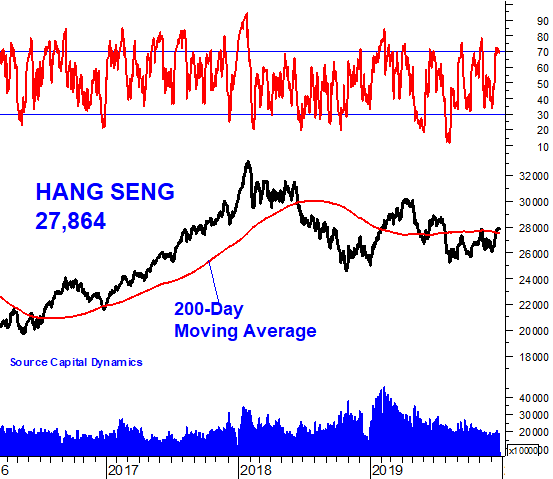
Nevertheless, it is heartening to see that the Malaysian media and civil society organisations have collectively launched a campaign called “Maaf Zahir Batin Hari Hari” or known as #MZB365 to help heal a dividing Malaysia. Carrying the meaning of “please forgive my wrongs, both thoughts and deeds”, the campaign will run for one whole year. This initiative could not have come at a better time. We believe the majority of Malaysians still treasure the country’s unique social fabric. With #MZB365, hopefully the silent majority can have a bigger voice to counter the destructive noises of the divisive minority.
Capital Dynamics Sdn Bhd and Capital Dynamics Asset Management Sdn Bhd, being capital market intermediaries licensed by the Securities Commission of Malaysia, are operating as usual in accordance with the Standard Operating Procedures prescribed by the relevant authorities. We will continue to take precautionary measures to protect our employees, clients and other stakeholders. You may reach us at +603-2070 2104 or 2105 or 2106 or email us at cdsb@icapital.biz (investment advisory) or enquiries@cdam.biz (asset management) for any enquiries.
Note from Publisher
Nevertheless, it is heartening to see that the Malaysian media and civil society organisations have collectively launched a campaign called “Maaf Zahir Batin Hari Hari” or known as #MZB365 to help heal a dividing Malaysia. Carrying the meaning of “please forgive my wrongs, both thoughts and deeds”, the campaign will run for one whole year. This initiative could not have come at a better time. We believe the majority of Malaysians still treasure the country’s unique social fabric. With #MZB365, hopefully the silent majority can have a bigger voice to counter the destructive noises of the divisive minority.
Announcement
Capital Dynamics Sdn Bhd and Capital Dynamics Asset Management Sdn Bhd, being capital market intermediaries licensed by the Securities Commission of Malaysia, are operating as usual in accordance with the Standard Operating Procedures prescribed by the relevant authorities. We will continue to take precautionary measures to protect our employees, clients and other stakeholders. You may reach us at +603-2070 2104 or 2105 or 2106 or email us at cdsb@icapital.biz (investment advisory) or enquiries@cdam.biz (asset management) for any enquiries.

Covid-19 SOP
All Capital Dynamics offices are operating as usual in accordance with the requirements/standard operating procedures ("SOP") as prescribed by the relevant authorities in their respective countries......MoreCovid-19 SOP
All Capital Dynamics offices are operating as usual in accordance with the requirements/standard operating procedures ("SOP") as prescribed by the relevant authorities in their respective countries.We will continue to take precautionary measures to protect our employees, clients and other stakeholders. All visitors must wear face masks and ensure social distancing when you visit any of our offices. To better manage your visits and avoid any inconvenience, you are advised to make an appointment with us before your visit via phone call or via email to the relevant offices. For more details, please access the webpage of the relevant offices.Less
Impersonation
Dear clients, followers and friends,
We would like to alert you to ongoing impersonation scams, with fraudsters posing as employees, financial advisors, representatives, agents and/or associates of the Capital Dynamics Group by using pseudonyms.....MoreImpersonation
Dear clients, followers and friends,
We would like to alert you to ongoing impersonation scams, with fraudsters posing as employees, financial advisors, representatives, agents and/or associates of the Capital Dynamics Group by using pseudonyms. There have also been instances where fraudsters impersonated Mr Tan Teng Boo (“Mr Tan”), the Managing Director and representative of Capital Dynamics Group which comprises Capital Dynamics Asset Management Sdn Bhd, Capital Dynamics Sdn Bhd, Capital Dynamics Global Pte Ltd, Capital Dynamics (S) Pte Ltd, Capital Dynamics Asset Management (HK) Pte Ltd, Capital Dynamics (Australia) Ltd and Capital Dynamics Investment Management and Advisory (Shanghai) Co Ltd.. These fraudsters / impersonators have created fake social media accounts / profiles and/or online applications to carry out their impersonation scams.
Based on information received to date, the modus operandi of the impersonation scams appears to be:
- The fraudsters would reach out to the public via SMS text messages, WhatsApp, Telegram, LINE or Facebook. They may claim to be financial advisors from the Capital Dynamics Group and present fake licences and/or certificates purportedly issued by financial regulators to advise on investments and/or carry out investment plans.
- At times, they may also claim to be Mr Tan by using fake Facebook / WhatsApp profiles and groups which display Mr Tan’s name and photos. The fake WhatsApp profile appears to be created using the mobile number +60111492189. There may be other fake WhatsApp profiles created by the fraudsters. These fake profiles are not managed by the Capital Dynamics Group and/or its employees including Mr Tan.
- By impersonating our employees and/or claiming to be financial advisors acting on behalf of Capital Dynamics Group, the fraudsters would deceive victims into opening “accounts” with certain “trading platforms”. The fraudsters would falsely claim that they would guide the victims to conduct trades with immediate gains, or that they were offering investment plans or training courses purportedly on behalf of the Capital Dynamics Group. Consequently, the victims were induced to transfer money or cryptocurrency to their “trading accounts”. Over time, the victims were not able to withdraw their money or cryptocurrency and the fraudsters became uncontactable.
We urge all of you to exercise caution and to conduct the necessary due diligence before making any investments. Kindly note that:
- We will never ask our clients to open accounts with trading platforms and to transfer money or cryptocurrency to these accounts. We are not affiliated or linked in any way to these illicit and unlicensed “trading platforms”.
- We do not offer investment advice, investment plans or training courses through agents.
- Any information on our fund management services (as well as our investment advice, opinion and events) is published only on our official websites, iCapital publications and/or official social media accounts. A list of our official channels may be found below.
- You should lodge police reports if you think that you may be a victim of scams.
- Please contact us if you have any doubts or uncertainties over any communications made to you by any person claiming to be an employee, officer, financial advisor, representative, agent and/or anyone claiming to be associated with the Capital Dynamics Group. The contact details of each of our offices may be found at this link: https://www.capitaldynamics.biz/en.
The scams were conducted without the knowledge, consent and authority of Capital Dynamics Group and our management. We as well as our Managing Director have lodged police reports in Kuala Lumpur and Singapore and have duly notified the authorities of these impersonations and scams.
More information on the impersonation scams may be found at: https://www.icapital.biz/public/general_announcements
Best wishes,
Capital Dynamics Group Less
Copyright © 2002 - Capital Dynamics Sdn Bhd (Co. No. 171744-U). All rights reserved.
i Capital ® and Capital Dynamics ® are registered trademarks of Capital Dynamics Sdn. Bhd.


